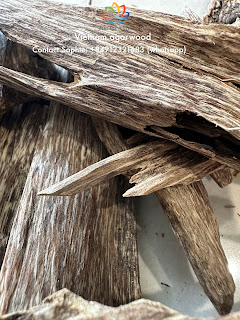1. White Kyara (Haku-Kyara)
- Appearance: Pale or light brown with a slight golden sheen.
- Aroma:
- Known for its elegant and refined fragrance.
- The scent is delicate, light, and slightly sweet, often described as "ethereal."
- Resin Content:
- Typically lower than other types but still highly valued for its subtle qualities.
- Value:
- Revered for its understated aroma, though it may be slightly less expensive than other types due to its milder fragrance.
2. Green Kyara (Aoi-Kyara)
- Appearance: Light green to olive-colored tones in the resin.
- Aroma:
- A fresh, herbal, and slightly bitter fragrance, reminiscent of green leaves or raw vegetation.
- Often described as invigorating and vibrant.
- Resin Content:
- Moderate to high resin levels, contributing to its balanced aroma.
- Value:
- Particularly sought after for those who prefer a more refreshing scent profile.
3. Yellow Kyara (Kiiro-Kyara)
- Appearance: Golden yellow to amber-brown hues in the wood.
- Aroma:
- A warm, sweet, and slightly spicy scent with hints of honey or floral notes.
- Considered comforting and luxurious.
- Resin Content:
- High, making it one of the more aromatic types of Kyara.
- Value:
- Highly valued for its rich, full-bodied fragrance and golden aesthetic.
4. Dark or Black Kyara (Kuro-Kyara)
- Appearance: Deep brown to black, with a dense and glossy texture.
- Aroma:
- A bold, earthy, and smoky scent with hints of spice and resinous depth.
- Known for its powerful and complex aroma, considered the most intense and profound among all Kyara types.
- Resin Content:
- Extremely high, resulting in a very dense and heavy piece of wood.
- Value:
- The rarest and most expensive type of Kyara, often considered the pinnacle of agarwood quality.
Comparison Summary
| Type | Appearance | Aroma Profile | Resin Content | Value |
|---|---|---|---|---|
| White | Light brown | Delicate, sweet, and subtle | Moderate | High |
| Green | Olive green | Fresh, herbal, slightly bitter | Moderate-High | High |
| Yellow | Golden yellow | Warm, sweet, floral, with hints of spice | High | Very High |
| Dark/Black | Deep brown/black | Bold, earthy, smoky, resinous complexity | Very High | Highest |
Cultural and Market Value
- White and Green Kyara: Often appreciated in ceremonial settings for their unique and gentle aromas.
- Yellow Kyara: Favored for luxury perfumes and incense, symbolizing prosperity and warmth.
- Dark Kyara: The most prestigious, often reserved for elite collectors, high-end rituals, and spiritual practices.














